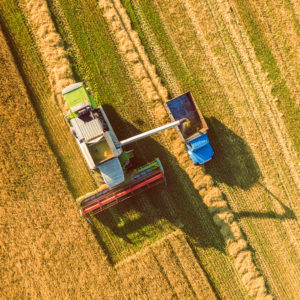Editor’s Note: For an alternative viewpoint, please see: Counterpoint: The Farm Bill Supports Us All
In the run-up to the 2018 Farm Bill, advocates for federal farm subsidies are claiming that more subsidies are needed to boost sagging rural economies. It’s true that many rural Americans are struggling. But spending more on farm subsidies will do little or nothing to help them.
Unemployment and poverty rates are higher in rural areas than in cities, and in the last few years many rural areas lost population. But only a small share of rural Americans actually work in farming. In rural counties, farming contributes 6 percent of all jobs. Instead, service jobs are most important in these areas, making up 41 percent of all employment.
Even for the 6 percent who do have farming jobs, most of their income comes from off the farm. Less than one-tenth of all farm households depend on farming for most or all their household income. Farm households also tend to be wealthier than the average U.S. household. In 2015, the median farm household income was $76,735, compared to $56,516 for the median U.S. household. That same year, fewer than a third of farm households had income below the national median.
Farm subsidies mainly go to a small, concentrated group of high-income farmers. Between 1995 and 2014, more than three-fourths of all crop subsidies went to the top 10 percent of farms.
Spending more on farm subsidies will boost the income of farmers who are already well off. Those billions won’t create jobs or help people struggling with poverty in rural America.
Farm subsidy advocates also claim that more subsidies will help rural Americans by lowering food prices. But only about one dime of every dollar Americans spend on food goes toward crop production. Recent research suggests that farm subsidies have no effect on the prices people who live in poverty pay for their food.
Advocates will also argue that providing more money to wealthier farmers will trickle down to improve the lives of those less fortunate. But many of the wealthy who receive farm subsidies are absentee landowners — they own acreage in rural areas, but live somewhere far away. These subsidy recipients are not putting any money back into the rural economy because they do not even live there.
Growing the number of jobs, making employment training available, and improving food security and drinking water quality would go much further in helping rural communities than spending more on farm subsidies. Common-sense reform of our bloated farm subsidy system would free up billions of dollars to invest in rural development while keeping a solid safety net in place for those farmers who really need the help.

